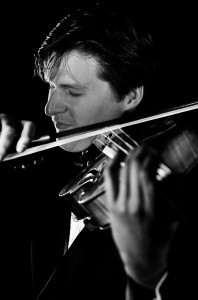Lithuanian Viola Art: Pedagogy and Creative Works
Doctoral student: Jurgis Juozapaitis
Supervisors: Prof. Jonė Kaliūnaitė, Assoc. Prof. Dr. Vytautė Markeliūnienė
Consultant: Prof. Petras Radzevičius
Department: Strings
Duration: 2011–2015
Abstract
The object of the present research paper is the development of the Lithuanian viola art. Referring to the formation of the viola school, the research pays a great deal of attention to the issue of its existence and to the evaluation of viola music. The research into the period 20th century – the beginning of the 21st century under question has proved the assumption that at that time the Lithuanian viola school was formed and established, with all its characteristics of an art school, and that new works for viola by Lithuanian composers were written.
Having examined the historical contexts of Lithuanian artistic life, the present research paper uncovers the major factors forming the culture of the Lithuanian viola art: the Lithuanian viola school, teachers, performers and works for viola by the Lithuanian composers. The research work embraces the stages of the development of this viola school – from the first manifestations of viola pedagogy in palaces of the Grand Duchy of Lithuania to the formation of a separate viola school at the Lithuanian State Conservatory, later its development at the Lithuanian Academy of Music and Theatre. The most famous Lithuanian violists-educators and violists-interpreters who made significant contributions to the development and dissemination of Lithuanian musical culture, especially the art of viola, are presented. It is primarily important to determine the factor which impeded the development of viola musical culture in Lithuania. One of the main reasons was the lack of professional performers. With an increase of their number, the viola music prominently evolved and assumed a significant position in the discourse of Lithuanian music modernization. Having analysed this music, the timbre characteristics of this instrument determining the particularity of musical compositions, and a shift in the concept of viola expression at the end of the 20th century and the beginning of the 21st century were disclosed.


